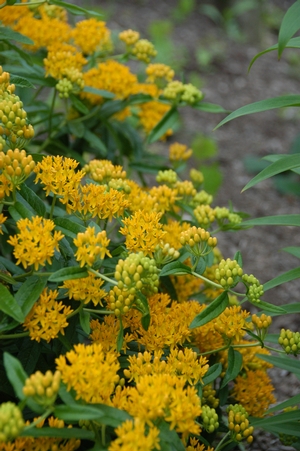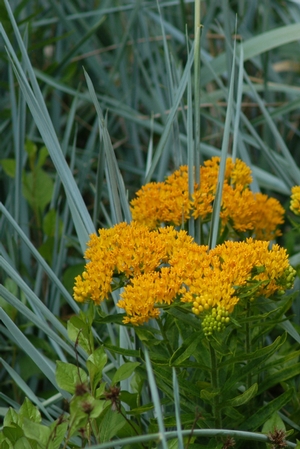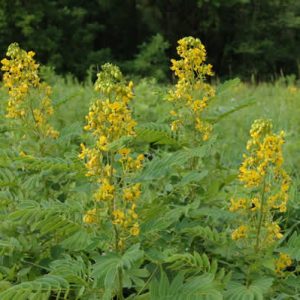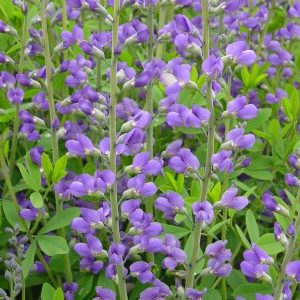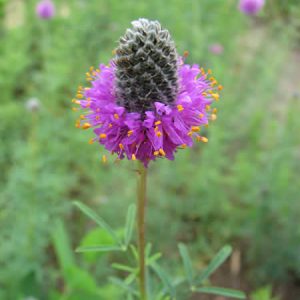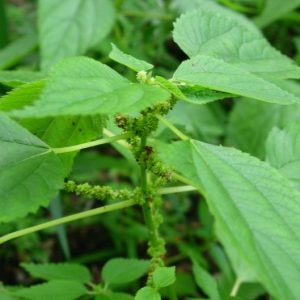Description
Asclepias tuberosa ‘Hello Yellow’
Distribution: AL, AR, AZ, CA, CO, CT, DC, DE, FL, GA, IA, IL, IN, KS, KY, LA, MA, MD, ME, MI, MN, MO, MS, NC, NE, NH, NJ, NM, NY, OH, OK, PA, RI, SC, SD, TN, TX, UT, VA, VT, WI, WV
Asclepias tuberosa ‘Hello Yellow’ is a native cultivar of Butterfly Weed. It features flat-topped clusters of cheerful yellow flowers that bloom from summer into autumn and is one of the showiest native wildflowers. Butterflies and other important pollinators and beneficial insects are attracted to flowers and the leaves serve as an important food source for developing Monarch larva.
Hello Yellow is easily grown in average, dry to medium, well-drained soils in full sun. Drought tolerant, it also does well in poor, dry soils. Butterfly weed does not transplant well due to its deep taproot, and is probably best left undisturbed once established.
Milkweed (Asclepias spp.) is of vital importance and critical to the survival of the Monarch butterfly as the larvae only eat milkweed. Females will search for fresh tender leaves on which to lay their eggs. With habitat loss and the use of pesticides it is has become increasingly difficult for Monarchs to find Asclepias during their spring migration and throughout the summer breeding season, particularly in the Midwest prairies where it once grew in abundance.

